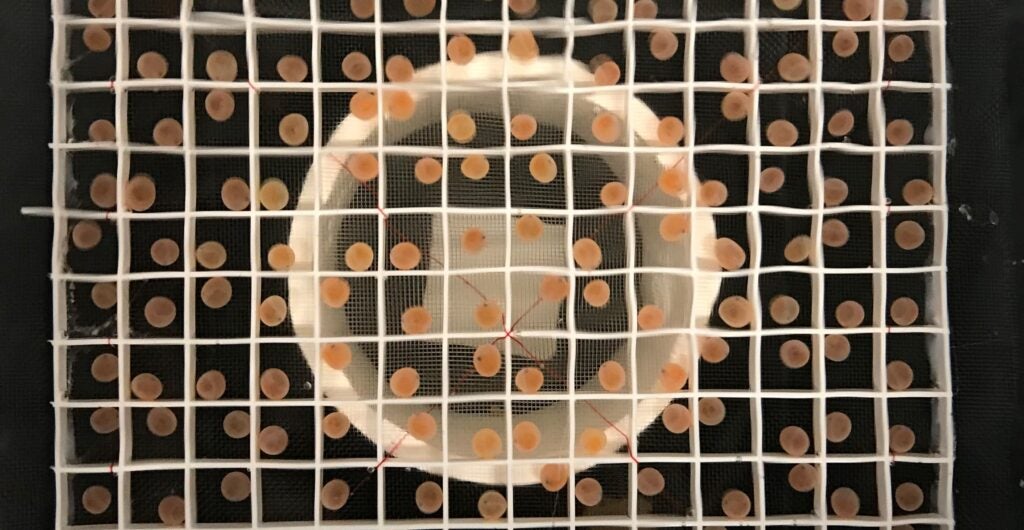Author: Heather Bell
In late 2019, at multiple hatcheries in California’s Central Valley (CCV), offspring of recently spawned fall-run Chinook salmon exhibited abnormalities in swimming, lethargy, and high early life-stage mortality; the combination of these symptoms is commonly referred to as thiamine deficiency complex (TDC). These observations were the first recorded incidents of TDC in Pacific coast salmonids.
Video: Two Chinook salmon fry swimming normally & two fry displaying thiamine deficiency complex (TDC) symptoms (lethargy and spiral swimming).
Of CCV’s four runs, the endangered Sacramento River winter-run Chinook salmon (WRCS) is perhaps the most vulnerable to thiamine deficiency as any additional stressor will exacerbate current threats to survival. The goal of this study was to evaluate the effect of thiamine supplementation in pre-spawn WRCS females on their offspring egg thiamine concentrations, survival, prevalence of TDC-related symptoms, and physiological performance and behavioral traits.
Adult female WRCS at Livingston Stone National Fish Hatchery were randomly administered either a thiamine injection or a sham/saline injection. After spawn, a subset of fertilized eggs from each female were analyzed for thiamine concentration by Dr. Jacques Rinchard’s lab at SUNY Brockport.

Eyed embryos were transferred to our laboratory at the University of California, Davis and kept for observations of TDC, survival, and to assess the effects of maternal thiamine treatments on offspring physiology and behavior. Upper thermal tolerance, routine metabolic rate, spontaneous swimming activity, boldness, and anti-predator responses were evaluated in swim-up fry.
Additional experiments examining the effects of thiamine deficiency on other runs of CCV Chinook salmon are being conducted in collaboration with the Todgham Lab.
